• Stainless Steel
7 Best Nickel Free Cookware Options

Reviewed by Trinity Anderson
Last Updated December 2023
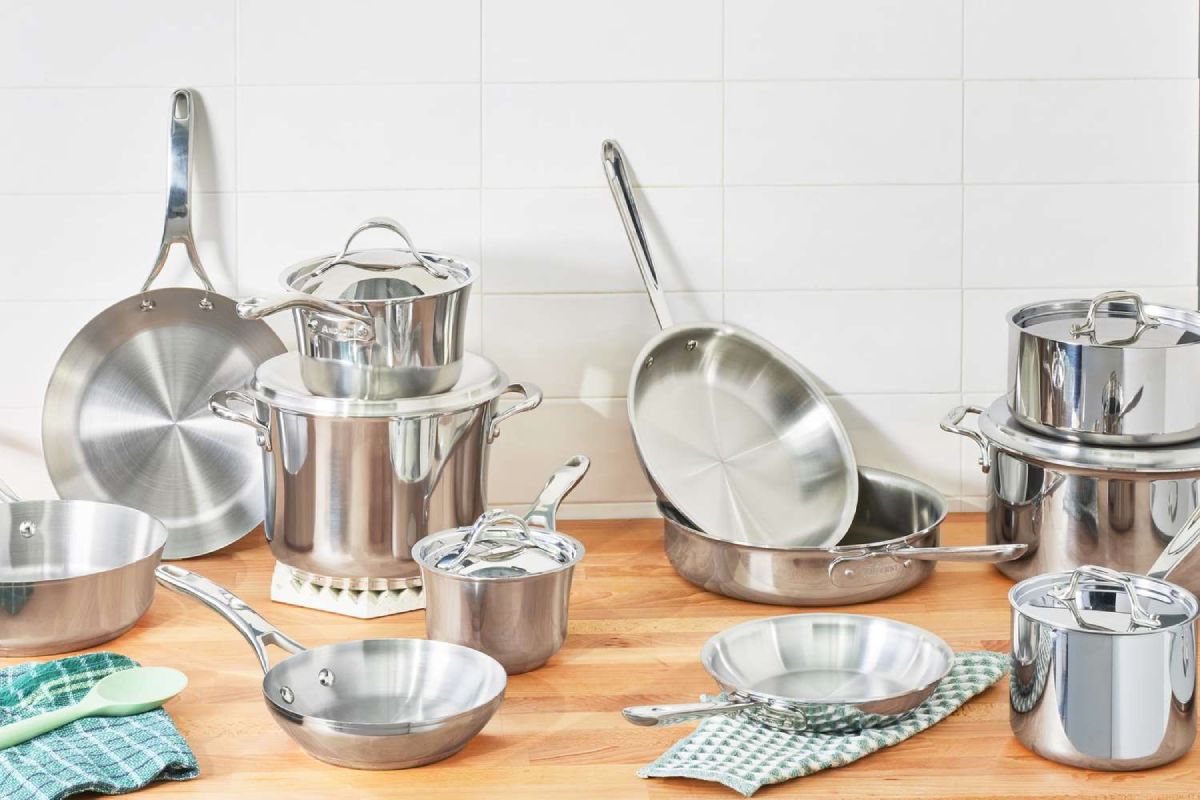
What is a nickel allergy?
I believe WebMD can provide a more comprehensive explanation, so I won't delve into extensive details here. Typically, individuals with a nickel allergy experience an allergic reaction known as contact dermatitis or eczema. This reaction is characterized by itchiness, rashes, and inflamed red skin. The range and severity of symptoms may vary, but for numerous women, it is commonly associated with wearing fashion jewelry that contains nickel. Consequently, I now understand the reason behind the persistent itchiness in my ears after wearing specific types of earrings.
What does this have to do with cookware?
To begin with, the majority of food grade stainless steel contains nickel. However, it is important to note that there are exceptions to this when discussing nickel-free stainless steel cookware.
Nickel plays a crucial role in stainless steel as it enhances its strength and provides resistance against oxidation and corrosion, especially in the presence of acidic substances. Additionally, it contributes to the attractive mirror-like finish that stainless steel possesses.
When stainless steel is labeled as '18/10 stainless steel', it signifies that it consists of 18% chromium and 10% nickel.
Moving on to the main point:
Stainless steel cookware, although considered safe and inert, does release small amounts of nickel (and chromium) into the food being cooked, particularly when acidic foods like tomatoes are involved. The quantity of nickel that leaches into the food depends on factors such as cooking time, cooking method, and the acidity of the food being cooked.
Herein lies the concern: for most individuals, the minimal amount of nickel that leaches into the food is not problematic. However, for those with a nickel allergy, especially those with systemic nickel allergy (which affects the body internally, not just causing skin irritation), ingestion of nickel or foods rich in nickel can lead to symptoms such as headaches, fatigue, nausea, vomiting, and diarrhea.
Please refer to my comprehensive article on stainless steel for a detailed analysis of this matter.
So in answer to the question:
If you have a nickel allergy, should you get nickel free cookware?
The answer is: Absolutely yes!
What are the options for nickel free cookware?
If you happen to be one of the 20% who have a nickel allergy and are in search of cookware that is free from nickel, you'll be pleased to know that there is a wide selection of options available.
I have compiled a list of 7 nickel-free cookware options for your convenience. Please note that these options are not ranked in any particular order, as their suitability depends on your personal preferences and cooking style.
To further assist you, I have also provided answers to key questions regarding each cookware category, such as what it is and whether it is safe to use.
Additionally, I have included recommendations for brands within each category that I believe would be the most suitable.
Enjoy the process of selecting your new cookware!
Nickel Free Cookware Option #1 – Aluminum cookware
What is it?
This type of cookware is known as plain or untreated aluminum cookware. When aluminum is exposed to the air, it naturally develops a thin layer of aluminum oxide on its surface. Although this layer is thin, it is durable and sturdy, rendering the metal non-reactive or inert. Unlike the next section, where the electrochemical process of anodization thickens the layer of aluminum oxide, this type of cookware does not undergo that process.
Is it safe?
Certainly. If you're looking for a comprehensive examination of the safety of aluminum cookware, I invite you to peruse my comprehensive guide on the subject. However, here's a condensed overview:
The majority of aluminum cookware available in the American market is either coated with a Teflon-type coating or a ceramic coating.
Coated or anodized aluminum cookware does not release aluminum into the food.
Even if there were untreated aluminum cookware (which is not commonly found in this market), the amount of aluminum that leaches into the food would not pose a health risk.
Best options for aluminum cookware
Ceramic based: Caraway Cookware

Please note that a reader has brought to my attention that although this cookware is free of nickel, its stainless steel handles may contain nickel. This could potentially trigger allergies in individuals who are allergic to nickel.
PTFE based: Rachael Ray Create Delicious Aluminum Cookware
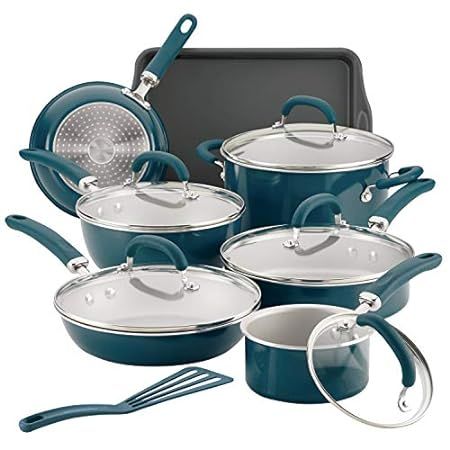
Nickel Free Cookware Option #2: Hard anodized aluminum cookware
What is it?
You may be curious about the distinction between aluminum and hard-anodized aluminum. Hard-anodized aluminum refers to aluminum that has undergone an electrochemical process known as anodization. This process results in the formation of a thick layer of non-reactive aluminum oxide, giving rise to what is commonly referred to as anodized or hard anodized aluminum.
Hard anodized aluminum is twice as durable as stainless steel and possesses scratch-resistant properties. It is also inert, meaning it does not react with food, and naturally exhibits a low-stick surface, making it ideal for cookware. However, it is rare to come across hard anodized cookware that does not feature a non-stick coating, such as Teflon (PTFE based) or ceramic.
Is it safe?
Yes. For further information, please consult the aforementioned section which provides details regarding the safety of aluminum cookware. The same principle is applicable to hard anodized aluminum cookware.
Best options for hard anodized aluminum cookware:
Ceramic based: Green Pan Valencia Pro
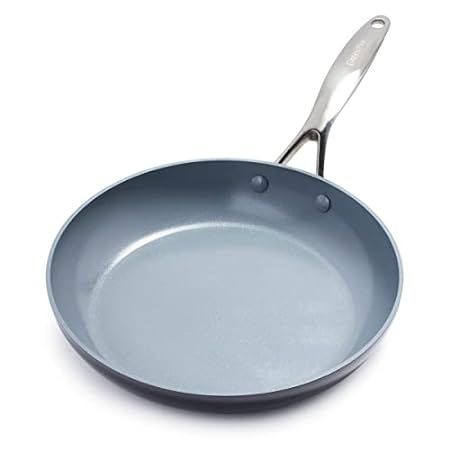
Please note that a reader has brought to my attention that although this cookware is free of nickel, its stainless steel handles may contain nickel, which could potentially trigger allergies in individuals who are allergic to nickel.
PTFE (Teflon) based: Rachel Ray Hard Anodized
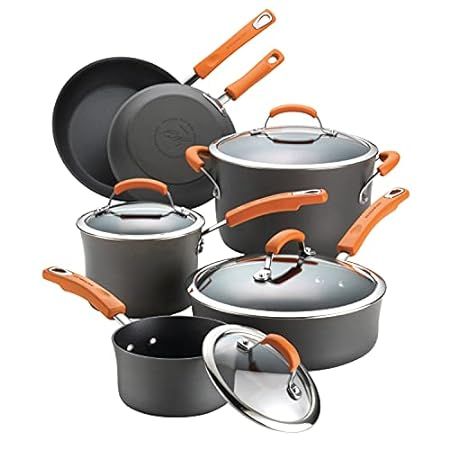
Nickel Free Cookware Option #3 -Cast Iron nickel free cookware
What is it?
Cast-iron pans are manufactured by pouring molten metal into a mold, resulting in a solid piece that includes the handle. The composition of cast iron typically consists of 97-98% iron and 2-3% carbon.
Cast iron pans are often regarded as the original "green" or healthy option, as they do not contain any chemicals or non-stick coatings.
There are two types of cast iron pans available: bare and enameled. Enameled cast iron pans have an enamel glaze fused into the cast iron, which eliminates the need for seasoning and prevents rust. However, they do not possess the same non-stick properties as bare seasoned cast iron pans.
Is it safe?
In general, the answer is yes. Cast iron is considered to be one of the safest and non-toxic materials for cookware. It is true that cast iron pans can release small amounts of iron into the food, which depends on factors such as the seasoning of the pan, cooking time, and the acidity of the food.
However, iron is an essential nutrient and cooking with cast iron cookware is sometimes recommended to increase iron intake in the diet. Unless someone has a specific health concern related to consuming excess iron, using cast iron is perfectly safe.
Additionally, cast iron naturally possesses non-stick properties, eliminating the need for any chemical coatings.
Best option for Cast Iron cookware
Bare cast iron: Lodge
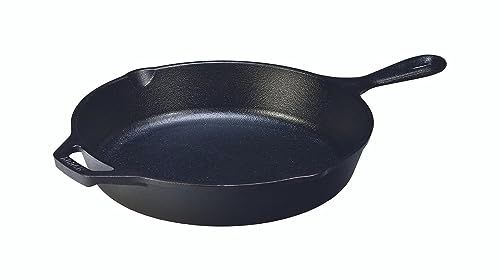
Enameled cast iron: Le Creuset
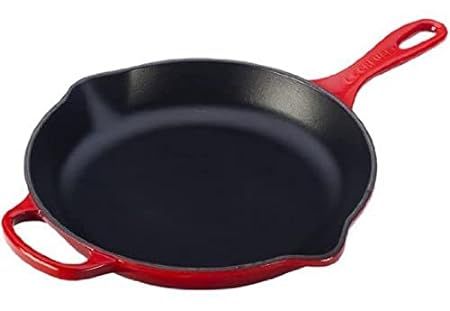
Nickel Free Cookware Option #4 – Carbon steel
What is it?
Carbon steel is composed of approximately 99 percent iron and 1 percent carbon, making it very similar to cast iron. However, unlike cast iron, carbon steel can be rolled or formed instead of being cast. This characteristic gives carbon steel pans a lighter and smoother texture.
During the manufacturing process of carbon steel pans, they undergo a surface hardening treatment to prevent rust. As a result, these pans have a blue or black finish instead of a shiny one. Therefore, you may come across terms like 'blue steel' or 'black steel', but it's important to note that they are all variations of carbon steel.
Is it safe?
Furthermore, due to its striking resemblance in composition to cast iron, it offers identical advantages as a 'non-stick' cookware option that can enhance your iron intake.
Best option for carbon steel: Made In Cookware Carbon Steel Pans
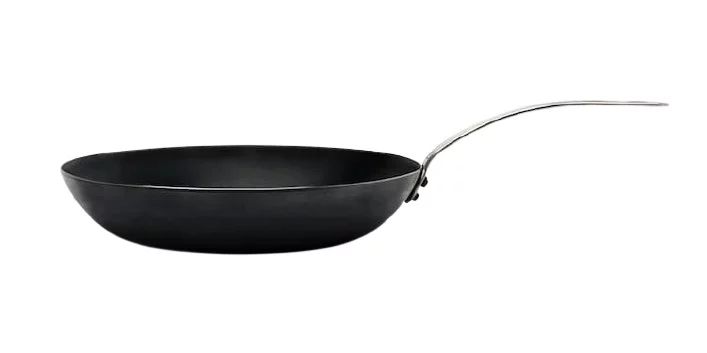
Nickel Free Cookware Option #5 – 100% Ceramic cookware
What is it?
Ceramic cookware is crafted using a clay formula, ensuring its 100% natural composition. This cookware is completely safe for cooking as it does not react with food and is entirely devoid of any metals or chemicals. Moreover, it is manufactured without the use of PTFE (Teflon) and PFOA, and it does not release any heavy metals into the food. With its natural ceramic glaze, there is no possibility of any coating flaking or peeling off into the food, guaranteeing a worry-free cooking experience.
Is it safe?
100% yes.
Best option for 100% ceramic cookware: Xtrema cookware
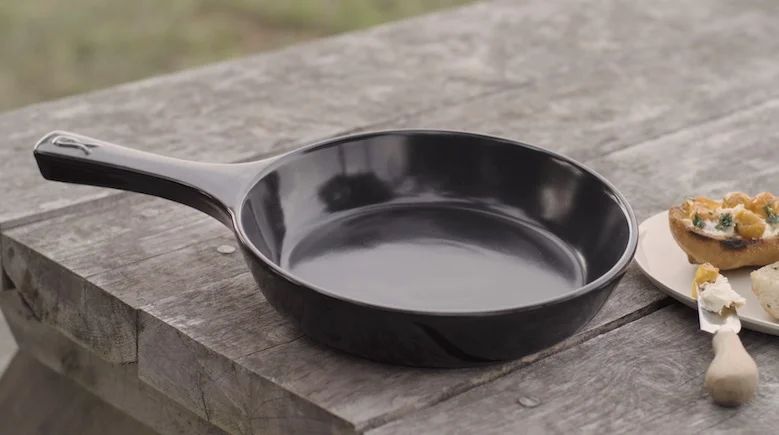
At Xtrema, we ensure that every batch of cookware undergoes rigorous testing for heavy metals before it is made available for purchase. Our cookware is not only FDA-approved but also meets the stringent standards set by California Prop 65. This certification guarantees that our products are completely free from harmful compounds that can cause cancer and birth defects.
While it's true that Xtrema cookware requires a bit of a learning curve, as it is unlike traditional metal pots and pans, it is important to handle it with care to prevent any accidental breakage. However, if you are someone who is seeking a metal-free option, Xtrema is the safest choice you can find in the market.
Nickel Free Cookware Option #6 – Glass Cookware
What is it?
Glass cookware, as the name implies, is not a top recommendation on my list. This is primarily due to its susceptibility to shattering or chipping, as well as its limited availability.
Is it safe?
Indeed, glass cookware is considered to be highly safe due to its non-reactive nature with food and its ability to prevent any material from leaching into the food.
Best option for Glass cookware : Corning Visions
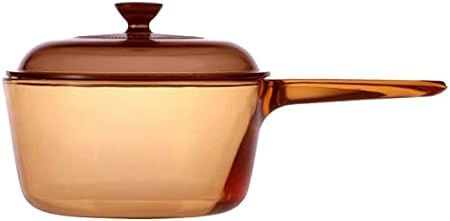
We have discussed all the choices that are free from nickel and not made of stainless steel. However, there may be certain reasons why you still prefer a stainless steel option. In that case, let's delve into:
Nickel Free Cookware Option #7: Nickel free stainless steel cookware
What is it?
This Japanese standard stainless steel is composed of 21% Chromium and does not contain any nickel, unlike the typical 18/10 stainless steel which consists of 18% Chromium and 10% nickel. The increased amount of chromium in this stainless steel provides it with comparable corrosion resistance to the standard 18/10 stainless steel. Therefore, individuals who have nickel allergies can still choose stainless steel cookware by opting for this alternative.
Is nickel free stainless steel cookware safe?
In general, yes. Stainless steel is widely regarded as one of the safest materials for cookware.
Best option for nickel free stainless steel cookware: Homi Chef
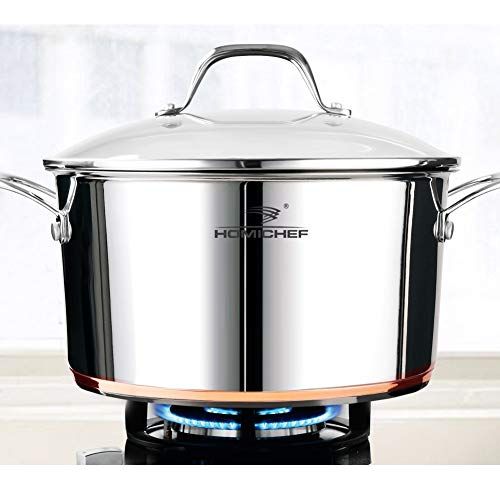
The Homi chef nickel free stainless steel cookware is designed with a tri-ply construction, featuring an aluminum core that is encased between two layers of nickel free stainless steel. The inner layer, which comes into contact with the food, is made of 21/0 stainless steel, while the outer layer is made of 18/0 stainless steel, making it compatible with induction cooking.